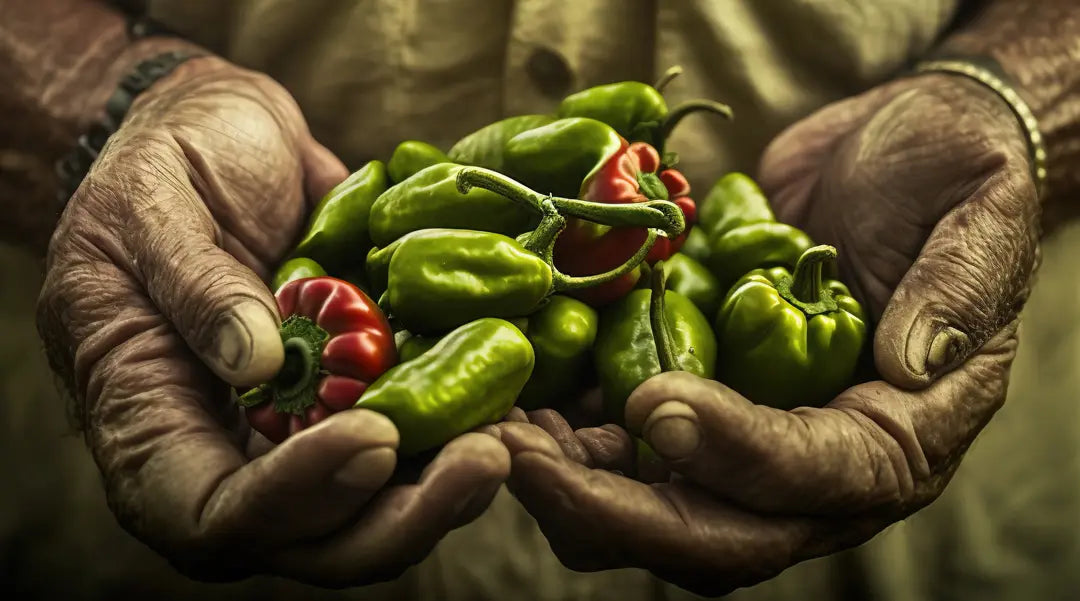
Species and Cultivars
Let's talk chillies, those spicy little wonders that add a kick to our meals and leave our taste buds tingling. In this quick and friendly guide, we'll be exploring the wonderful world of chillies, specifically focusing on the species and cultivars that are popular in New Zealand. So, buckle up and let's get spicy!
Chillies (also known as peppers) belong to the Capsicum genus, which is part of the Solanaceae family. There are five main species of chillies, each with its own unique characteristics and flavours. Before we dive into these species, let's quickly chat about what a cultivar is. A cultivar, short for 'cultivated variety', is a plant that has been selectively bred by humans for specific traits like colour, shape, size, or flavour. So, when we talk about chilli cultivars, we're referring to the different types of chillies that have been cultivated within each species.
Now, without further ado, let's explore the five main species of chillies and their popular cultivars:
Collapsible content
Capsicum annuum
This species is the most common and includes a wide range of chilli peppers, from mild bell peppers to the spicy jalapeños. Here are a few popular cultivars in NZ:
• Cayenne: These slender, red chillies pack a punch with a heat rating of around 30,000 to 50,000 Scoville Heat Units (SHU). They're great for adding some heat to your dishes and can be easily grown in pots or garden beds.
• Jalapeño: A favourite in Mexican cuisine, jalapeños have a heat level of 2,500 to 8,000 SHU. They're perfect for making salsas, stuffing, or simply adding a mild kick to your meals.
• Hungarian Wax: Sporting a vibrant yellow colour, these chillies have a heat range of 5,000 to 10,000 SHU. They're great for pickling or adding to salads.
Capsicum chinense
Known for producing some of the hottest chillies on the planet, this species is not for the faint-hearted. Let's look at a few fiery cultivars:
• Habanero: With a heat level of 100,000 to 350,000 SHU, these little orange or red chillies will make your taste buds dance. They have a fruity, almost citrusy flavour and are perfect for making hot sauces.
• Ghost Pepper (Bhut Jolokia): Brace yourself for this one! At 855,000 to 1,041,000 SHU, the Ghost Pepper is one of the world's hottest chillies. Use it sparingly to add extreme heat to your dishes, but handle it with care!
• Trinidad Scorpion: Another scorcher, the Trinidad Scorpion has a heat rating of 1.2 million to 2 million SHU. It's named after its unique scorpion-like tail, and its intense heat should be treated with respect.
Capsicum baccatum:
This species is well-known for its fruity and tangy flavour profile. A few popular cultivars include:
• Aji Amarillo: This Peruvian chilli pepper has a heat level of 30,000 to 50,000 SHU. It boasts a lovely fruity flavour and is commonly used in sauces and stews.
• Bishop's Crown: With a distinctive crown-like shape, these mild chillies (5,000 to 30,000 SHU) have a sweet, fruity taste. They're excellent for snacking on or adding to salads.
Capsicum pubescens
Native to South America, this species is known for its thick, meaty flesh and distinctive black seeds. One notable cultivar is:
• Rocoto: With a heat range of 30,000 to 100,000 SHU, Rocotos are quite spicy. They're ideal for stuffing or adding to stews, and their thick walls make them perfect for grilling.
There you have it! A taste of the wonderful world of chillies, right here in New Zealand. Whether you're looking for mild or wild, there's a chilli pepper to suit your taste buds. So, why not give it a go and grow some of these fiery beauties in your own garden? happy eating!
Remember to handle chillies with care, especially the hotter varieties, and wash your hands thoroughly after touching them to avoid any accidental burns. Enjoy experimenting with these versatile and flavourful plants in your cooking adventures, and don't forget to share your chilli creations with friends and family.
Happy gardening, and cheers to spicing up your life with these fantastic chilli peppers in Aotearoa!
If you are interested in reading more about Capsicum cultivars click the link below
